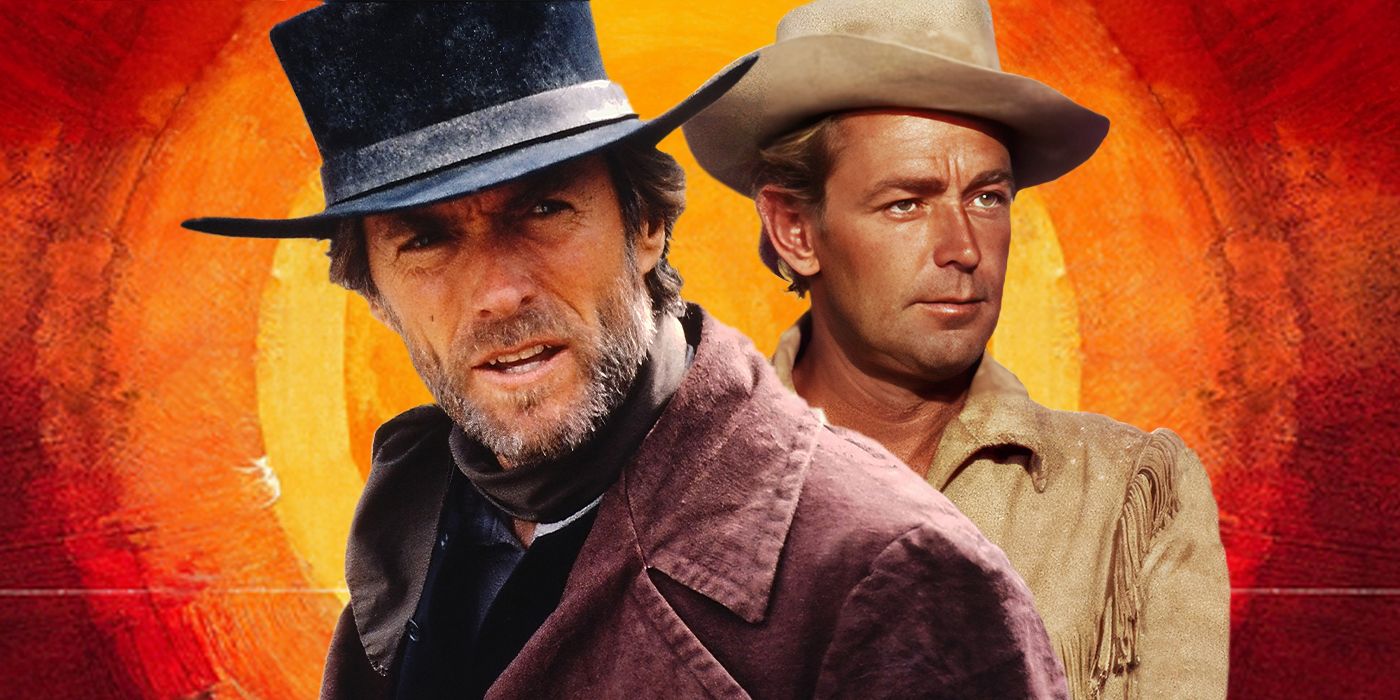
For many, the Western genre conjures images of dusty landscapes, stoic cowboys, and perhaps a predictable shootout or two. It’s a genre often pigeonholed, seen as a niche for dedicated enthusiasts of spurs, saloons, and sweeping vistas. However, to dismiss the Western entirely is to overlook some of the most profound, innovative, and downright entertaining stories ever told on screen, offering much more than just horseback heroes and villainous outlaws.
Indeed, the vast, untamed frontier of cinematic storytelling is far richer than initial impressions might suggest. From gritty dramas exploring moral complexities to visually stunning epics that redefine the very concept of heroism, Westerns have evolved dramatically over the decades, blending timeless themes with groundbreaking filmmaking techniques. They delve into universal human experiences—justice, survival, ambition, loneliness, and the pursuit of freedom—in ways that resonate far beyond the confines of the Old West setting.
Prepare to challenge your perceptions as we embark on a thrilling cinematic journey through a handpicked selection of Westerns. Drawn from Rotten Tomatoes’ list of the 100 best-reviewed Western movies of all time, these films are more than just genre highlights; they are essential viewing experiences that promise to captivate, challenge, and entertain even those who’ve historically steered clear of the genre. Get ready to discover why these stories of the West are truly timeless, offering compelling narratives and unforgettable characters for every discerning viewer.

1. **The Man Who Shot Liberty Valance (1962)**”Featuring a trio of classic leading men and a rich story captured by a director at the peak of his craft, The Man Who Shot Liberty Valance is one of the finest Westerns ever filmed.” This critics’ consensus perfectly encapsulates the enduring power of John Ford’s masterpiece, a film that digs deep into the myths and truths underpinning the American West. It’s not just a Western; it’s a profound meditation on how legends are forged and the sacrifices made for civilization.
The film masterfully weaves a narrative where questions arise when Senator Stoddard (James Stewart) attends the funeral of a local man named Tom Doniphon (John Wayne) in Shinbone. This seemingly simple event spirals into a flashback, revealing a complex history involving the ruthless outlaw Liberty Valance (Lee Marvin). It forces viewers to confront the stark differences between what we believe happened and the often-grimmer reality, a theme that remains remarkably relevant today.
What makes this film especially compelling for non-Western fans is its focus on character and narrative depth over spectacle. It’s a psychological drama dressed in Western attire, exploring themes of law versus anarchy, education versus brute force, and the cost of progress. The performances by Stewart, Wayne, and Marvin are iconic, delivering nuanced portrayals that elevate the story beyond typical genre fare, making it a must-watch for anyone who appreciates powerful storytelling and strong performances, regardless of their feelings about cowboys.
John Ford, at the peak of his craft, presents a visually arresting film that uses stark black and white cinematography to enhance its moral ambiguities. The confined setting of Shinbone, rather than sprawling landscapes, keeps the focus tight on human interactions and their consequences. It’s a narrative that challenges the very foundations of Western heroism, offering a bittersweet commentary on the transition from the wild frontier to an ordered society. The film’s quiet power and intellectual heft make it an unmissable cinematic achievement.

2. **Pale Rider (1985)**”Nearly a decade after The Outlaw Josey Wales, Clint Eastwood returns as a director to the genre that made his name with this elegant, spiritual Western that riffs on the classic Shane.” This film stands as a testament to Eastwood’s directorial prowess and his deep understanding of the Western genre, delivering a story that is both familiar and refreshingly unique. It taps into archetypal narratives while imbuing them with a distinct, almost mystical quality that elevates it above a simple genre piece.
The synopsis tells of a mysterious Preacher (Clint Eastwood) who rides into a small gold mining camp in the Sierra Nevada mountains. When property owner Coy LaHood (Richard Dysart) starts using a band of hooligans to terrorize a group of small-town gold prospectors, the Preacher becomes their unexpected protector. This classic setup of a lone hero defending the innocent is given new life through Eastwood’s minimalist yet potent direction, drawing viewers into a struggle between good and greed.
Even if Westerns aren’t your usual go-to, *Pale Rider* offers a compelling narrative driven by strong moral conflict and an enigmatic protagonist. The Preacher’s presence is less about brute force and more about a quiet, unwavering conviction that inspires hope in the face of tyranny. The film’s visual style is stunning, with breathtaking mountain backdrops contrasting sharply with the harsh realities of the miners’ lives. It’s a beautifully shot film that uses its setting not just as scenery, but as an integral part of the story’s emotional landscape.
This movie distinguishes itself with its spiritual undertones and a powerful, almost mythological quality to its hero. Eastwood’s portrayal is iconic, embodying a silent strength that resonates deeply. The film’s exploration of community, resistance, and the timeless battle against oppression makes it highly relatable. It’s a slow burn that builds to a satisfying climax, demonstrating how the Western can be a vehicle for profound philosophical questions, all wrapped in a visually appealing package that demands attention.

3. **She Wore a Yellow Ribbon (1949)**While the critics’ consensus isn’t explicitly provided for this particular film in the context, *She Wore a Yellow Ribbon* is widely acclaimed as a quintessential John Ford Western, embodying the director’s lyrical storytelling and his profound respect for the characters of the Old West. It’s a vibrant, emotionally rich entry into the genre, standing out with its stunning Technicolor cinematography and deeply human narrative.
The synopsis reveals the poignant tale of Calvary Captain Nathan Brittles (John Wayne), whose last job before retirement is to soothe relations with the Cheyenne and prevent a potential Indian uprising. This mission becomes intertwined with his personal struggles, including his reluctance to retire and his concern for his niece. The film beautifully captures the twilight of an era, exploring themes of duty, loyalty, and the inevitable passage of time.
What makes this film captivating for any viewer, regardless of their Western affinity, is its emphasis on character development and emotional depth. John Wayne delivers a nuanced performance as Captain Brittles, showcasing the weariness and wisdom of an aging soldier facing his final command. The human element, the relationships, and the quiet dignity of the characters are front and center, making it a powerful drama that just happens to be set in the cavalry.
Beyond its character study, the film is a visual feast, known for its breathtaking use of Monument Valley. The vibrant colors and sweeping landscapes are not merely background but an active part of the storytelling, evoking the grandeur and harsh beauty of the frontier. It’s a visually spectacular experience that combines epic scale with intimate personal stories, demonstrating the genre’s capacity for artistry and emotional resonance that transcends mere adventure.

4. **The Ox-Bow Incident (1943)**Once again, an explicit critics’ consensus is not available within the provided context, yet *The Ox-Bow Incident* is universally lauded as a groundbreaking and deeply unsettling Western that transcends its genre through its powerful moral questioning. It’s a stark, compelling film that delves into the dark side of human nature and mob mentality, making it a critical watch for anyone interested in timeless ethical dilemmas.
The synopsis sets a chilling scene: “In this classic Western, wanderers Gil Carter (Henry Fonda) and Art Croft (Henry Morgan) ride into a small Nevada town, only to find themselves embroiled in a tense situation.” They stumble upon a posse forming to hunt down rustlers, leading to an “incident” that tests the very fabric of justice and human decency. This narrative, while set in the Old West, resonates with profound contemporary relevance.
For those who typically shy away from Westerns, *The Ox-Bow Incident* offers a powerful, almost thriller-like psychological drama. It’s a film that focuses intently on human behavior under pressure, exploring themes of justice, prejudice, and the inherent dangers of unchecked mob rule. Henry Fonda’s performance is particularly noteworthy, bringing a quiet intensity to his character as he grapples with the escalating injustice, making his moral stand a poignant anchor in a world losing its way.
This movie’s brilliance lies in its unflinching examination of moral ambiguity and the swift, terrifying descent into lawlessness. It uses the frontier setting not for glorification, but as a crucible for exploring the darker aspects of human nature when societal structures are weak. It’s a powerful, thought-provoking film that offers a searing critique of vigilantism and the fragility of justice, serving as a timeless cautionary tale that every film enthusiast should experience.

5. **A Fistful of Dynamite (1971)**”Duck, You Sucker is a saucy helping of spaghetti western, with James Coburn and Rod Steiger’s chemistry igniting the screen and Sergio Leone’s bravura style on full display.” This consensus perfectly captures the explosive energy and distinctive flair of Sergio Leone’s often-overlooked masterpiece, also known as *Duck, You Sucker!* It’s a dynamic, politically charged film that pushes the boundaries of the Spaghetti Western, offering both thrilling action and profound character study.
At the beginning of the Mexican Revolution in 1913, the film’s synopsis introduces us to a fascinating duo: greedy bandit Juan Miranda (Rod Steiger) and idealist John H. Mallory (James Coburn), an Irish revolutionary explosives expert. Their chance encounter forces them into an unlikely alliance, initially driven by Juan’s desire for gold, but evolving into a deeper entanglement with the revolution. This clash of personalities and ideologies is a fertile ground for dramatic tension and unexpected humor.
Even if the idea of a Western doesn’t immediately grab you, this film’s unique blend of action, dark humor, and political commentary provides a surprisingly accessible entry point. The exceptional chemistry between Steiger and Coburn is undeniable, creating a captivating dynamic between the cynical bandit and the weary idealist. Leone’s signature grand scale, evocative cinematography, and Ennio Morricone’s unforgettable score elevate every scene, making it a sensory and emotional experience that transcends typical genre expectations.
Leone’s bravura style ensures that every moment is meticulously crafted, from intense close-ups to sweeping panoramic shots. The film grapples with weighty themes of war, revolution, and the arbitrary nature of heroism, all filtered through the lens of two reluctant partners. It’s a sprawling, epic narrative that offers both explosive entertainment and thoughtful reflection, making it a compelling watch for anyone who appreciates ambitious filmmaking and stories that challenge convention, even within a familiar genre.

6. **For a Few Dollars More (1965)**”With Clint Eastwood in the lead, Ennio Morricone on the score, and Sergio Leone’s stylish direction, For a Few Dollars More earns its recognition as a genre classic.” This critical endorsement highlights the triumvirate of talent that solidified the Spaghetti Western as a formidable force in cinema. It’s an essential chapter in the Man With No Name trilogy, elevating the genre with its iconic performances, innovative direction, and a score that has become legendary in its own right.
The film’s synopsis throws us into the treacherous Wild West, where a murderous outlaw known as El Indio (Gian Maria Volonté) and his gang terrorize and rob. Two rival bounty hunters, Colonel Douglas Mortimer (Lee Van Cleef) and Monco (Clint Eastwood), initially compete for the bounty on El Indio, but soon realize that a temporary alliance might be their only path to justice—or their share of the reward. The intricate dance between these hardened characters is a masterclass in tension and character interplay.
For audiences not typically drawn to Westerns, *For a Few Dollars More* provides a thrilling and stylish introduction to the genre’s more adventurous side. Clint Eastwood’s stoic, enigmatic presence is utterly captivating, while Lee Van Cleef brings a cold, calculating intensity that perfectly complements him. The film is less about traditional good versus evil and more about moral shades of gray, a theme that resonates universally. Its intricate plot, filled with double-crosses and unexpected twists, keeps viewers on the edge of their seats.
Sergio Leone’s directorial vision is on full display here, utilizing extreme close-ups, long takes, and a deliberate pace that builds suspense to an almost unbearable degree. Ennio Morricone’s score is not just background music; it’s a character in itself, driving the narrative and amplifying emotions with its haunting melodies and innovative sounds. This film is a pure cinematic experience, demonstrating how the Western can be a canvas for unparalleled style and immersive storytelling, making it a must-see for anyone who loves great filmmaking.




